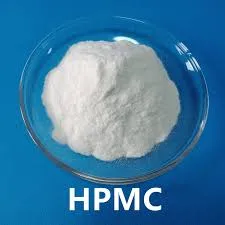
Říj . 19, 2024 07:57 Back to list
Hydroxyethyl Cellulose Production Techniques and Methods for Optimal Quality
Hydroxyethyl Cellulose Manufacturing Process
Hydroxyethyl cellulose (HEC) is a versatile, water-soluble polymer derived from cellulose, widely utilized in various industries due to its thickening, gelling, and stabilizing properties. Its applications range from personal care products and pharmaceuticals to construction materials and food. Understanding its manufacturing process is crucial for ensuring quality and consistency in the final product.
The manufacturing of hydroxyethyl cellulose involves several key steps, each vital for obtaining the desired molecular structure and properties. The process generally begins with the selection of high-quality cellulose as the primary raw material. Cellulose, a natural polymer obtained from plant materials such as wood and cotton, is usually purified to remove impurities and to enhance its reactivity in subsequent chemical processes.
1. Etherification of Cellulose
The essential step in the production of HEC is the etherification of cellulose. The purified cellulose is typically slurried in a solvent, commonly water or alcohol, to create a well-dispersed solution. After achieving the right consistency, a reagent, ethylene oxide, is introduced. Ethylene oxide is a cyclic ether that reacts with the hydroxyl groups of cellulose, resulting in the attachment of hydroxyethyl groups to the cellulose backbone. This step usually requires specific reaction conditions, including controlled temperature and pressure, to optimize the degree of substitution and ensure proper hydroxylation.
The etherification reaction is generally catalyzed by an alkaline catalyst, such as sodium hydroxide, which helps accelerate the reaction. The choice of catalyst and the reaction conditions significantly affect the properties of the final HEC product, including its molecular weight and viscosity.
2. Neutralization
After the etherification reaction reaches completion, the resulting mixture contains hydroxyethylated cellulose along with unreacted reagents and by-products. To neutralize the alkalinity and remove excess catalyst, the mixture undergoes a washing process. This step is crucial to ensure that the final product is non-toxic and meets regulatory standards for various applications. Neutralization typically involves adding a dilute acid, such as hydrochloric acid or acetic acid, followed by thorough washing with water.
hydroxyethyl cellulose manufacturing process

3. Drying
Once neutralized, the hydroxyethyl cellulose solution is concentrated to remove excess water. This is usually achieved through evaporation under controlled conditions. The resulting concentrated solution is then dried, either by spray drying or freeze-drying methods, to obtain HEC in powder form. The drying process is critical as it influences the solubility characteristics and flowability of the final product.
4. Milling and Sieving
The dried HEC may be in large granules or chunks. To achieve the desired particle size and uniformity, it undergoes milling and sieving processes. This step enhances the product’s performance in applications, ensuring that it dissolves easily when mixed with water, which is particularly important in formulations such as paints, adhesives, and cosmetics.
5. Packaging and Quality Control
Finally, the finished hydroxyethyl cellulose is subjected to rigorous quality control tests to ensure it meets specified standards for purity, viscosity, and functionality. Once it passes all quality checks, it is packaged in moisture-proof bags or containers for distribution.
In conclusion, the manufacturing process of hydroxyethyl cellulose is a sophisticated operation that requires precise control over chemical reactions and conditions to produce a high-quality product. Through careful selection of raw materials and meticulous processing steps, manufacturers can create HEC that meets the diverse needs of various industries, underscoring its importance as a key ingredient in modern formulations.
-
The Widespread Application of Redispersible Powder in Construction and Building Materials
NewsMay.16,2025
-
The Widespread Application of Hpmc in the Detergent Industry
NewsMay.16,2025
-
The Main Applications of Hydroxyethyl Cellulose in Paints and Coatings
NewsMay.16,2025
-
Mortar Bonding Agent: the Key to Enhancing the Adhesion Between New and Old Mortar Layers and Between Mortar and Different Substrates
NewsMay.16,2025
-
HPMC: Application as a thickener and excipient
NewsMay.16,2025
-
Hec Cellulose Cellulose: Multi functional dispersants and high-efficiency thickeners
NewsMay.16,2025







